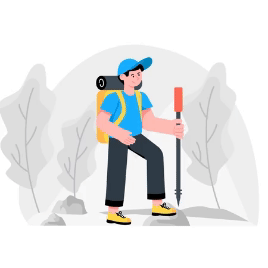

Trekking in Nepal offers breathtaking landscapes, diverse trails, and unforgettable adventures. Whether you're exploring the iconic Everest Base Camp, the serene Annapurna Circuit, or hidden gems off the beaten path, proper preparation is key. Below are answers to some of the most frequently asked questions to help you plan a safe and enjoyable trek in Nepal.
Nepal offers a plenty of trekking routes, but some of the most popular ones include the Everest Base Camp Trek, Annapurna Circuit Trek, Langtang Valley Trek, and the Manaslu Circuit Trek. Each route has its own unique charm and challenges, provding to a wide range of trekking preferences
The level of fitness required depends on the specific trek chosen. While some treks are more challenging and require a higher level of fitness and endurance, there are also plenty of shorter and easier treks suitable for beginners or those with moderate fitness levels. It's essential to choose a trek that aligns with your fitness level and interests.
Safety should always be a priority while trekking in Nepal. It's crucial to stay hydrated, acclimatize properly to altitude, and be prepared for changing weather conditions. Following your guide's instructions, sticking to designated trails, and carrying essential gear such as a first aid kit, navigation tools, and extra clothing are also important safety measures.
The best time to trek in Nepal is during the pre-monsoon (spring) season from March to May and the post-monsoon (autumn) season from September to November. During these times, the weather is generally clear with mild temperatures, making for ideal trekking conditions and stunning views.
For most treks in Nepal, you'll need to obtain a TIMS (Trekkers' Information Management System) card and/or a permit depending on the region you plan to trek in. Additionally, if you're trekking in a restricted area or national park, you may need special permits. It's essential to check the latest requirements and regulations before embarking on your trek.
More Reasons Why Travellers Trust Us